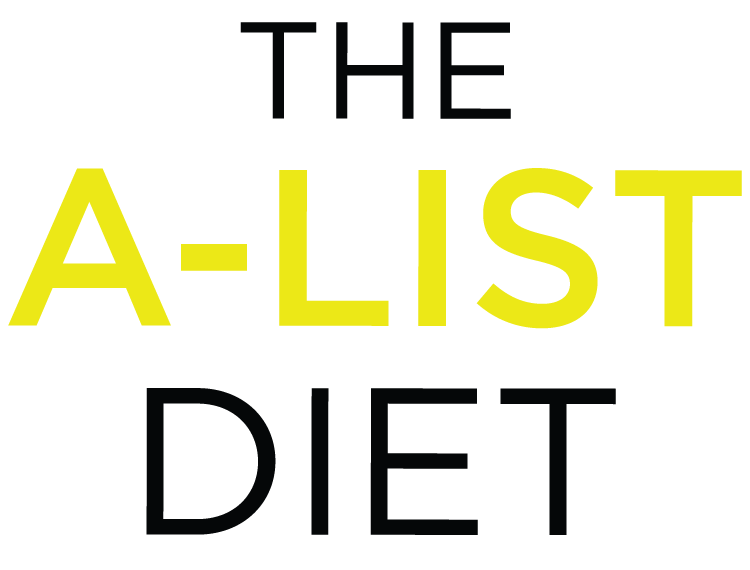Throughout the years, I’m sure you’ve heard your fair share of dietary advice, warnings, and weight loss tips your friends swear by. And after over 20 years of helping patients in their journeys to better health, you can trust I’ve heard them ALL.
Disturbingly, some are complete rubbish — and even detrimental to your health. I’m going to set the record straight — once and for all — in my new four-part series, “Weight loss myth busters.”
Over the next two weeks, I’ll be discussing some of these widespread obesity myths — and I guarantee you’ve heard quite a few of them.
And you’re not at fault here — we often adopt these views from family members, friends, the internet, or what’s published in over-sensationalized lifestyle magazines. But I’ve always believed in science-backed health and wellness — so, if you can’t find the evidence to back it up, don’t follow the advice.
During this series, I’ll put some of the most concerning myths to rest, making you a healthier, better-informed individual. And who knows, perhaps one of these has been holding you back in achieving your weight loss potential.
Let’s dive right in:
1) Setting a specific weight loss goal is key.
This technique was popularized in the late 1970s and 80s during the “fitness craze” movement and mass opening of health clubs. They helped spread the notion of an “ideal body weight” that has pervaded American culture since.
This “ideal body weight” is often unattainable, and it’s turned out to be downright dangerous. In the 90s, many research-based professional organizations began to promote a more realistic goal of a 5-10 percent reduction in total body weight.
Studies have found that when people set a specific number goal for weight loss and then fail to reach it, it sets off a downward spiral. Poorer body image, disengagement in healthy behaviors, lowered self-esteem, increased levels disappointment and depression are typical of this weight loss strategy.
In fact, one study from the University of Pennsylvania looked at 60 obese women during a 48 week weight loss program. Before treatment, they were asked to identify various weight targets:
- their “dream” or ideal weight (which averaged a hefty 32 percent reduction in body weight. To put this into perspective, a 165 woman would need to lose more than 50 pounds to reach her goal.)
- “happy” or acceptable weight (which the group identified as a 25 percent reduction in body weight…or 41 pounds that a 165 pound woman would have to lose to feel “happy” with her results. )
- “disappointed” or unacceptable weight (which participants identified as a 17 percent average reduction in body weight — or a 28 pound loss for a 165 pound woman.)
After the program concluded, 47% of the patients failed to achieve a self-designated “disappointed” level of weight loss. Despite the fact that most of them had still lost a significant amount of weight.
The A-List verdict: This illustrates the large disparity between expectations and healthy, science-based recommendations.
And it’s why I never set a specific weight loss goal with my patients. ALL weight loss should be considered a “win.” You’re much more likely to throw in the towel if you continually grow frustrated and disappointed about some arbitrary number on the scale.
Instead, I encourage my patients — and you — to adopt this mentality: It doesn’t matter how much or how long it takes, as long as the trend continues downward.
2) Daily self-weighing interferes with weight loss.
It’s common knowledge that our weight slightly fluctuates every day, depending on total body water, intestinal, and glycogen contents. It’s often believed that for someone trying to lose weight, seeing the scale go in the oppose direction of their efforts can be highly discouraging. Instead, many dietitians and commercial weight loss groups recommend weekly weigh-ins or ditching the bathroom scale altogether.
But according to several studies, quite the opposite has been shown to be more effective.
Researchers from Tempre University of Technology in Finland studied the effects of daily self-weighing and its influence on weight loss. The study analyzed 2,838 weight measurements from over two years of volunteer weigh-ins, from 40 overweight individual (with BMIs of 25 and over). The results showed that daily self-weighing was associated with weight loss, while breaks in weighing longer than one week, and especially longer than one month, were associated with consistent weight gain.
Another study, from the University of North Carolina at Chapel Hill, asked all participants to weigh themselves daily for 6 months. Researchers noted a significant amount of weight loss in the high intervention group — who self-weighed daily and tracked their progress via a smart scale and app — and lost an average of nearly 7 percent of body weight. As compared to the delayed intervention control group — where it wasn’t reminded to self-weigh daily or track progress — which lost an average of only .35 percent of body weight.
The A-List verdict: Weigh yourself once every day, around the same time. Take note of your progress for optimal weight loss or maintenance. You shouldn’t focus on a certain number or amount — it’s normal for weight to fluctuate a pound or two from day to day. But instead, take note of a continual downward trend. If you see an upward trend, adjust your diet and fitness regimen accordingly until you find what works best for your specific dieter type. (You can learn which dieter type you are in chapter two of The A-List Diet.)
3) Eat less and exercise more.
According to a study by the National Weight Control Registry, people who’ve successfully lost weight have indeed altered their eating habits and increased their frequency of physical activity. However, there’s a lot more to it than just counting calories and working out more often.
Many researchers argue that counting calories is misguided and potentially harmful, since it doesn’t take important factors like nutrition and food quality into account. Again, this is where a lot of commercial diets and weight loss programs steer people wrong.
As I discuss on page 67 of The A-List Diet, people often don’t consider how those calories they’re counting will affect their hormones and metabolism. It doesn’t matter if you eat less than 1,000 calories a day if what you’re putting into your body raises your insulin levels and promotes fat storage.
Additionally, many dieters often find it difficult to maintain calorie-restrictive diets for a long duration time.
The A-List verdict: Stop counting calories! Eating well should be enjoyable, not a math problem. Here’s what you need to know: there are healthy, nutritive calories and non-nutritive calories. If you eat a Mediterranean-based diet and nourish your body’s metabolic, hormonal, digestive, mental functions consistently, you WILL lose weight. This is the basis of my A-List Diet program. You can read about the success people have found with this method by clicking here.
If you take anything away from today’s installment, it’s this: don’t be your own worst enemy. Allow yourself to enjoy eating nutritious food and not restrict it, stop beating yourself up if you don’t arrive at an arbitrary number on the scale, and be mindful of your weight. Know that it’s all a process that doesn’t happen overnight. If you pay attention to yourself and treat your body with a great degree of care, you will begin to feel and look better for life.
Tune in next week for installment two of “Weight loss myth busters,” as we tackle three more myths that may be sabotaging your health and happiness.
Recipe of the Week:
Spinach Salad with Pattypan Squash (from page 196 of The A-List Diet)
Serves 4
Ingredients:
- 8 pattypan squash
- 5 tablespoons macadamia nut oil, divided
- 1 ¼ teaspoons coarse sea salt, divided
- ¼ teaspoons freshly ground black pepper
- 8 ounces spinach
- 2 tablespoons freshly squeezed lemon juice
- ½ teaspoon Dijon mustard
- ½ teaspoon chia seeds
- 2/3 cup toasted almonds
Directions:
- Preheat oven to 450°F.
- Trim the woody ends of the squash and halve each squash crosswise.
- Scoop out the seeds, leaving a ½-inch-thick shell.
- Brush the cut sides of the squash shells with 1 tablespoon of the oil and season with ½ teaspoon of the salt and the black pepper.
- Arrange the squash, cut-side down, on a baking sheet and roast until the squash is tender and the flesh side is browned, about 15 minutes.
- Transfer the cooked squash to a large bowl, along with the spinach.
- Combine the remaining 4 tablespoons of oil, lemon juice, mustard, chia seeds, and the remaining ¾ teaspoon salt in a jar and shake vigorously, or whisk everything in a small bowl until emulsified.
- Toss the dressing with the squash and spinach and top with the almonds. Serve.
One More Thing:
Unfortunately, weight loss isn’t the only topic riddled with myths. Just about every aspect of health is subject to misinformation perpetuated by “experts” and organizations that operate from the mentality of profit over people. And mainstream media is no help either.
It’s no wonder so many people are confused about how to safely and effectively improve their health.
That’s why you’ve taken a great first step in your weight loss journey by subscribing to the A-List e-letter. I side with science-based, natural medicine and am not afraid to call out garbage when I see it.
If you’re interested in comprehensive health news aside from weight loss, you may be interested in my free e-letter, the Reality Health Check. I cover it all — from allergies to Alzheimer’s to gut health and diabetes. You can subscribe here.
Sources:
https://www.ncbi.nlm.nih.gov/pmc/articles/PMC4272668/
http://time.com/4937456/weight-loss-myths/
http://time.com/4799241/weight-loss-stop-counting-calories/
http://onlinelibrary.wiley.com/doi/10.1002/oby.20396/full

